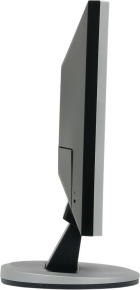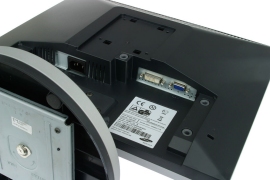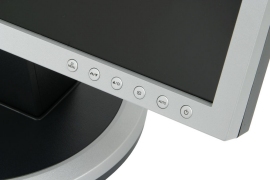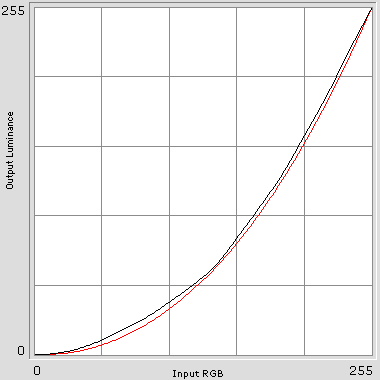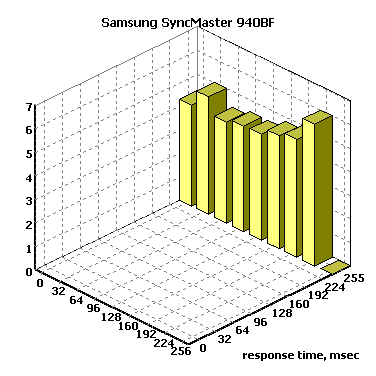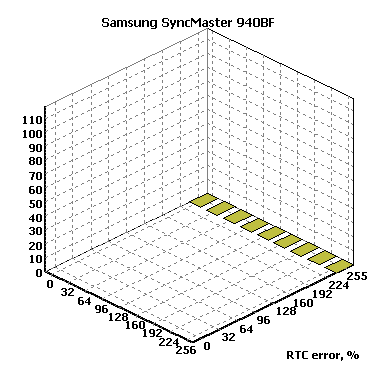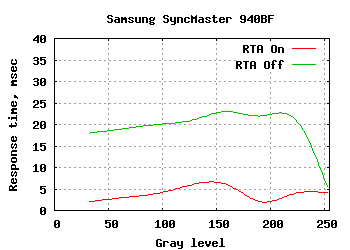LCD MONITOR REVIEW SAMSUNG SYNCMASTER 940BF 19 INCH
![]()
|
|
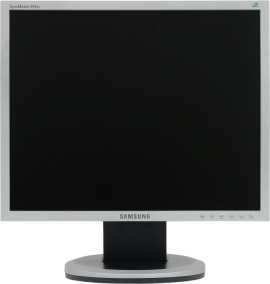 |
||||||||||||
| Posted:2006-07-08 By lcd monitor Number of View:33915 |
|||||||||||||
By :lcd monitor Posted:2006-07-08
Samsung SyncMaster 940BF
The SyncMaster 940BF looks very much like the above-described SyncMaster 940B – and their names differ by only one letter! There is an important difference between them, though: the 940B uses a rather slow (as we’ve just found out) TN+Film matrix whereas the 940BF features RTC technology and claims a response time of only 2 milliseconds on gray-to-gray transitions. It is in fact a direct rival to the BenQ FP93GX. Only these two models sport so fast matrixes at present.
Unfortunately, the lcd monitor’s stand has been simplified. In this respect it succeeds not to the 940B, but rather to the inexpensive 940N which had a simple stand. You can only change the tilt of the screen here; the portrait mode and height adjustment are not available on the 940BF. If necessary, the stand can be replaced with a VESA-compatible one.
The lcd monitor has analog and digital inputs, and an integrated power adapter.
The lcd monitor’s controls are the same cute round buttons located on the front panel. The menu is Samsung’s standard one, too. It’s easy to control the lcd monitor – I have no complaints here. By default the lcd monitor has 75% contrast and 100% brightness. To achieve 100-nit brightness of white I dropped the brightness setting to 35% and the contrast setting to 40%. Brightness is controlled with the lamps here, through pulse-width modulation at 360Hz. Color gradients are reproduced superbly irrespective of its current settings.
The gamma curves looks neat enough, but the gamma is set too low, even though not as low as, for example, on the SyncMaster 940T (the curves lie higher than they should, resulting in a brighter than necessary image).
There’s a bigger dispersion of the color temperatures than in the previous model, and once again there is no mode with warm colors. The colors in the Warm mode can only be characterized as neutral, not warm. The Normal mode yields downright cold colors.
The lcd monitor is indeed very fast, even surpassing the BenQ FP93GX. The average response is a mere 3.0 milliseconds. The maximum is 7.0 milliseconds (on a transition between two light tones).
Alas, the high speed is accompanied with errors. The average RTC error is 19.1% here while the FP93GX’s average error was 15.2%. Fortunately, the value of the error is rather small on black-gray transitions, which means that the artifacts won’t be too conspicuous at everyday work, unlike on Samsung’s 60th series lcd monitor (the SyncMaster 760BF model was reviewed in our article dedicated to response time compensation technology and the SyncMaster 960BF will be discussed later in this article) which produce artifacts even when you’re dragging dialog boxes in Windows (white shadows trail behind black letters on a gray background).
The lcd monitor offers the option of disabling response time compensation completely (it’s referred to as RTA in the menu) and the result of your doing so is shown in the diagram above. As you see, the matrix installed in the 940BF is quite fast even without RTC (but of course the response time is much lower with enabled RTC, except for the rightmost point on the graph which is the transition to pure white where RTC technology doesn’t work). But why would you want to buy an RTC-enabled lcd monitor, paying extra for this very response time compensation, only to disable it right after purchase?
The lcd monitor’s contrast ratio of over 300:1 is very good, especially for a TN+Film matrix. It can’t beat PVA matrixes in this respect, but has a good result for its own class. Thus, the SyncMaster 940BF is very short of being an ideal lcd monitor (if such a thing is at all possible), a rather big RTC error being its only drawback. Alas, Samsung’s lcd monitors are still a long way from the competitors in this respect. The good news is that the error is now smaller on black-gray transitions and, consequently, less conspicuous, but the average error on all the transitions is still quite big. On the other hand, the 940BF is the fastest lcd monitor among the models included in this review with an average response time of only 3.0 milliseconds which is 0.5 milliseconds smaller than the second-best result of the BenQ FP93GX. Half a millisecond isn’t a big difference, of course, but the current record-holder should be praised anyway. In the rest of its parameters the 940BF is a good, if not exceptional, midrange lcd monitor on a TN+Film matrix. It is quite well set up for its class, has a good contrast ratio and is assembled in a neat and nice-looking case. It doesn’t make much sense to choose an office lcd monitor from RTC-enabled models only, while for home users and for gamers this lcd monitor is a good choice.
we would be happy to answer for your question . if you have suggestion or comment
regarding this review our support would be glad to help just join our forum and ask u will get the best answer
to discuss check our forum section :-) RATE THIS REVIEW | |||||||||||||
![]()

lcd monitor review Samsung SyncMaster 940BF 19 inch
lcd monitor review Samsung SyncMaster 940BF 19 inch


7600gt review
7600gt is the middle card range.
We already benchmarked this video card and found that ...

 geforce 8800gtx and 8800gts
geforce 8800gtx and 8800gts  Xtreview software download Section
Xtreview software download Section  AMD TURION 64 X2 REVIEW
AMD TURION 64 X2 REVIEW  INTEL PENTIUM D 920 , INTEL PENTIUM D 930
INTEL PENTIUM D 920 , INTEL PENTIUM D 930  6800XT REVIEW
6800XT REVIEW  computer hardware REVIEW
computer hardware REVIEW  INTEL CONROE CORE DUO 2 REVIEW VS AMD AM2
INTEL CONROE CORE DUO 2 REVIEW VS AMD AM2  INTEL PENTIUM D 805 INTEL D805
INTEL PENTIUM D 805 INTEL D805  Free desktop wallpaper
Free desktop wallpaper  online fighting game
online fighting game  Xtreview price comparison center
Xtreview price comparison center 

- The new version of GPU-Z finally kills the belief in the miracle of Vega transformation
- The motherboard manufacturer confirms the characteristics of the processors Coffee Lake
- We are looking for copper coolers on NVIDIA Volta computing accelerators
- Unofficially about Intels plans to release 300-series chipset
- The Japanese representation of AMD offered monetary compensation to the first buyers of Ryzen Threadripper
- This year will not be released more than 45 million motherboards
- TSMC denies the presentation of charges from the antimonopoly authorities
- Radeon RX Vega 64 at frequencies 1802-1000 MHz updated the record GPUPI 1B
- AMD itself would like to believe that mobile processors Ryzen have already been released
- AMD Vega 20 will find application in accelerating computations
- Pre-orders for new iPhone start next week
- Radeon RX Vega 57, 58 and 59: the wonders of transformation
- ASML starts commercial delivery of EUV-scanners
- The older Skylake processors with a free multiplier are removed from production
- Meizu will release Android-smartphone based on Helio P40
- AMD Bristol Ridge processors are also available in American retail
- The fate of Toshiba Memory can be solved to the next environment
- duo GeForce GTX 1080 Ti in GPUPI 1B at frequencies of 2480-10320 MHz
- New Kentsfield overclocking record up to 5204 MHz
- Lenovo released Android-smartphone K8



computer news computer parts review Old Forum Downloads New Forum Login Join Articles terms Hardware blog Sitemap Get Freebies


